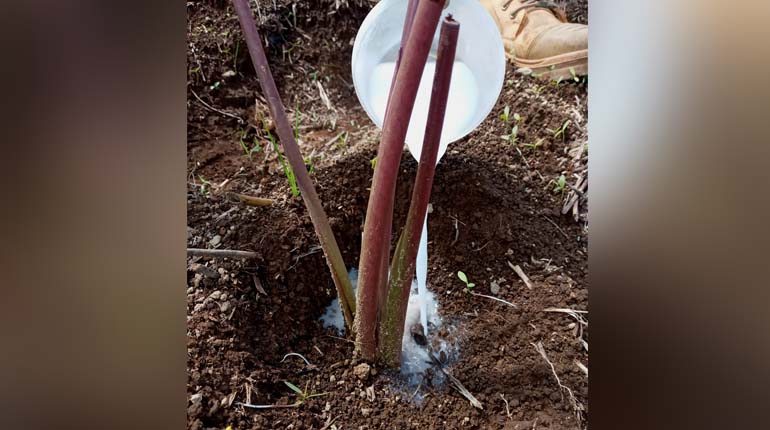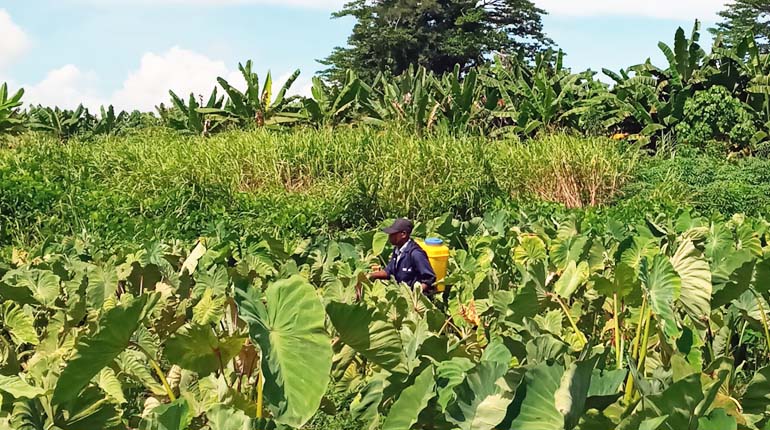A field experiment was carried out to assess how effective Bifenthrin is, a chemical pesticide used with three different application methods on two taro beetle species; Papuana and Eucopidocaulus.
The three application methods were; measuring beaker (standard practice), knapsack sprayer, and hand sprayer. Results from the field experiment showed that knapsack sprayer was more efficient and could cover a large taro field in a short period of time while carrying 10 liters of bifenthrin mixture, and using a beaker is tedious.
Research Associate-Plant Genetic Resources Alex Galus expressed that the three methods used to control taro beetle were all effective and covered an area of 0.007 hectares. The application of bifenthrin took between 18 to 43 minutes to apply on the same area of land.
Mr. Galus explained that the field experiment results indicate that the three methods of applying bifenthrin were effective in controlling the taro beetles. Taro is a prized crop in PNG and plays a very significant part in our socio-cultural activities. The taro beetles may pose a threat to these socio-cultural activities, and finding the best possible ways like the application of bifenthrin can contribute towards sustaining such practices.





